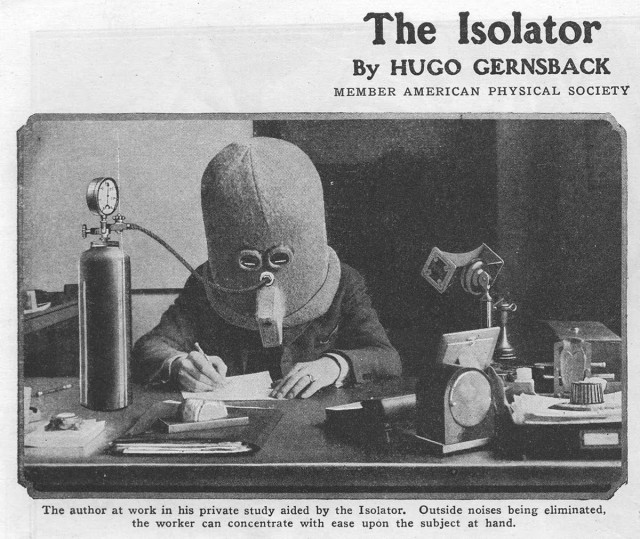
¶ The Virus and the 2020-pandemic gave the word isolation new meanings. Social distancing and staying at home became crucial. How could you shield yourself from threats in the environment, from contagion and disturbing external elements?
¶ One of the central technologies for isolation was the respiratory protection mask. The abbreviation FFP (Filtering Facepiece Particles) hadn’t been part of common knowledge in Sweden before, if you hadn’t been working in environments where you needed dust protection or for that matter within the healthcare system. In April 2020 you could have a discussion if FFP2 was enough protection against the virus. No, FFP3 was needed. Aerosol filtration and properly techniques to use this technology. Is the mask there to protect yourself or to protect others from you? Masks and their different varieties, how to get them, who produced them and how to use them. Face masks as possible fashion items and accessories, white, black, blue or patterned. It was suddenly part of people’s attention, part of debates and popular culture.
¶ Face masks was one dimension of isolation, another was the idea about domesticity and The Home. It became obvious that the way people lived differed. Mansions or tiny apartments, or even the lack of a proper home. The number of persons in a household. These things became crucial for how quarantine and social distancing would work. How did people create a place that felt comfortable, homely and in which isolation was feasible. In her research about homes and domestic life, anthropologist Sarah Pink has stressed how home is more than a space to live in. Home is a feeling. Home is made through peoples practices:
Home is created through our everyday actions and relationships, through the meanings we invest in a place, through the sentiments that are tied to the home, and through the digital technologies that now mediate how we make homes.
Framing home as a feeling, rather than a house, helps us to understand why new houses rarely ‘feel like home’ until we’ve settled in, and it complicates, without eliminating, the existence of the home in a house characterised by inequality, violence, isolation, depression or worse. Home can be fleeting, shifting, and momentary—carved out and saved from the chaos that might surround it. The dissonance between house and home also provides us with some key messages for understanding the implications of #stayathome.
Pink, Sarah (2020) #stayathome: being in an uncertain place. In: Future Matters, ETLab, Monash University, Melbourne.
¶ And for the ones who should work at home: How could you turn the home into a workspace? How could working-from-home be effectively organised? For some workers, Zoom, Teams or Skype-meetings became part of everyday life. Virtual backgrounds on screens, muting and unmuting of microphones. New meeting etiquettes and rhythms. Some created small bubbles and micro-spaces in their homes to gain concentration. Closets, attics and corridors got new roles as workspaces.
¶ These two dimensions of isolation, the mask and the domestic workspace for concentration has got its surreal predecessor in The Isolator. This technology, this helmet was invented in 1925 by Hugo Gernsback. The idea behind The Isolator was to create a small space, an interiority, in which the user could really concentrate. A sensory enclosure. All outside noise was kept abay by the helmet. The small slits, through which the user could look, were just big enough to see merely a line of text. This should afford extreme focus and concentration. The oxygen was supplied through a hose, so the user got merely what he or she needed. Minimal information and visual feedback from the outside world and the life supporting oxygen.[1]
¶ We are at a time when isolation has got a new meaning. Uncertain times, that will probably provoke a plethora of new ideas. The question is what kind of odd innovations the Corona crisis will spark? What will be The Isolator of 2020?
[1] For an extensive collection of writings by Gernsback, in which the inventor and writer present The Isolator among other inventions and thoughts, see: The Perversity of Things – Hugo Gernsback on Media, Tinkering, and Scientification, an edited volume by Grant Wuthoff.

Version History
v. 1.1. May 25 2020. Two Youtube-videos (Drake and Einstürzende Neubauten) with caption added. Minor language corrections.
v. 1.2 May 29 2020. Added a section about home as a feeling and a place made through practices, based on a reference to Sarah Pink (2020).